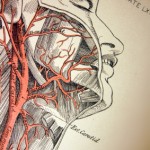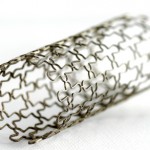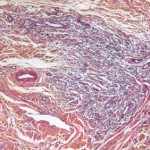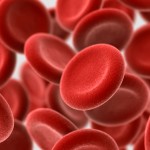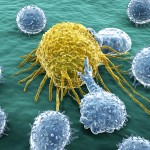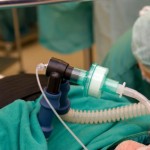Last January the Center for Medicare and Medicaid Services convened a meeting to discuss what's the best way to handle carotid artery disease (CA-D). Those vessels are a major supply of blood to our brains and, as we age , smoke, don't exercise, have high blood pressure, diabetes, high cholesterol, get obese, or develop other risks factors they can be narrowed by atherosclerosis (AKA hardening of the arteries).
Obviously if we can stay young (we can't), keep our weight normal, have normal blood pressure (start by consuming less salt), and never smoke, we have a better chance of less changes in our blood vessels.
Well that's just not the case for much of our population, so then the question arises should our medical folk look for CA-D on a routine basis? Except for being 71 years old, I'm at relatively low risk with normal lipids, a weight approximating what my 8th-grade scale would have shown and a BP of 118/68. I only smoked for four years and quit for good over 40 years ago. So my physician listens to my neck for an abnormal sound called a bruit, but otherwise hasn't suggested any other tests for CA-D.
How about the rest of her patients, or for that matter, all of you who are adults. If you have risk factors, and I should include a family history of stroke, you may or may not have symptoms of CA-D. Those could include, but aren't limited to, blurred vision, weakness in one part of your body, problems in speaking or understanding others, memory issues or being confused.
Then your physician has a host of tests she or he can order: those include an ultrasound to see if you have normal blood flow, angiograms, or even CAT scans or MRIs. Ultrasound (the fancy term is a carotid duplex Doppler study) is noninvasive, so nobody has to stick an artery or inject a dye. Angiograms, also called arteriograms are invasive and there's an added risk if the dye is used...it can cause damage to your kidneys. CAT scans expose you to x-rays and MRIs may be tough if you're claustrophobic (although the chamber was much more open the last time I had one).
So most docs will be very judicious in picking which patients get which tests.
But what if you don't have CA-D symptoms and either physical examination or testing reveals significant disease? An Australian neurologist, Dr. Anne L Abbott has been a significant figure in opposing the current high rate of carotid artery procedures. Roughly 125,000 Americans per year have either carotid artery surgery or angioplasty with stent placement (inserting a balloon catheter which is inflated to open the artery and a mesh tube designed to keep it that way).
There's a heated debate going on among physicians who are experts in vascular disease and thirty-eight of them wrote an open letter to Medicare opposing the manufacturers who want the government agency to expand insurance coverage to include stent placement in patients who have no symptoms at present.
On the other hand, a May 2010 article by an interventional Cardiologist, Dr. Cristopher White from the Ochsner Institue in New Orleans, examines in great detail the results of a variety of studies done in the United States and in Europe. He mentions that stroke is our third leading cause of death; that of the 3/4th million who have one in this country per year, many are left with significant disabilities; and of adults over 65, one in twenty to one in ten have significant carotid artery narrowing (50% or more) without having symptoms.
Stroke risk is clearly related to how much atherosclerotic disease is present; more is bad. The article I mentioned above was written by and perhaps slanted toward stents and compares surgical and non-surgical interventional approaches. What is not clear is how much screening should be done in patients without symptoms and what the outcome of modern medical therapy would be compared to either invasive procedure.
I'm very interested to find out more, but have no intention at present of having more tests without better data.
What are those?

